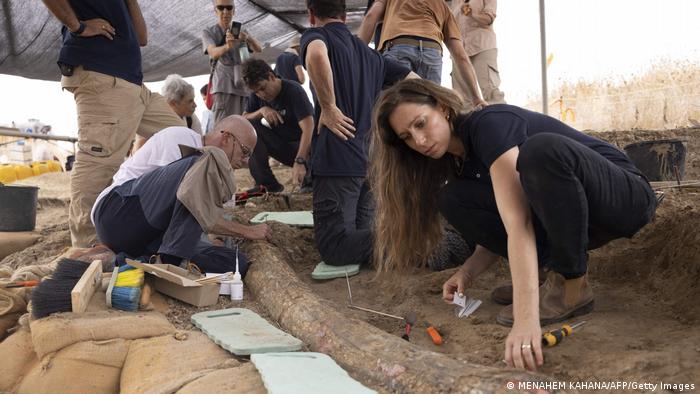Israeli archaeologists dig up the large tusk of an ancient elephant

Israeli archaeologists have unearthed the complete tusk of a giant prehistoric elephant that once roamed around the Mediterranean. The 2.6-meter (8.5-foot) remnant, weighing approximately 150 kilograms (330 pounds), is estimated to be around half a million years old.
“This is the largest complete fossil tusk ever found at a prehistoric site in Israel or the Near East,” Israel Antiquities Authority (IAA) prehistorian Avi Levy, who headed the dig, said on Wednesday.
It belonged to a Palaeoloxodon antiquus, or straight-tusked elephant, that would have stood up to 5 meters tall, significantly larger than today’s African elephants.
Levy said the tusk would be preserved and transferred to a lab for further analysis to “try to define the age, where he lived, where he walked.”

Mystery over who hunted the behemoth
What makes the find even more exciting is that it was found in an area where stone and flint tools and other animal remains have been recovered.
It is “very puzzling, very enigmatic,” said Omry Barzilai, an IAA archaeologist, explaining that the dig team did not know whether ancient people hunted the behemoth on the spot or whether they brought the felled animal’s tusk from further away.
The site in modern-day Revadim, Israel, was dated to the late lower palaeolithic period, around 500,000 years ago, based on stone tools found in the vicinity, the antiquities authority said.
But half a million years ago, when the ancient elephant died, the now-arid terrain was likely a swamp or shallow lake, an ideal habitat for ancient hominids.
The identity of the prehistoric humans who inhabited the region — a land bridge from Africa to Asia and Europe — was “a mystery,” said Levy.
“We haven’t found remains of people here, we only find their material culture the trash they discarded after use, whether animal bones or flint tools,” the historian added.





